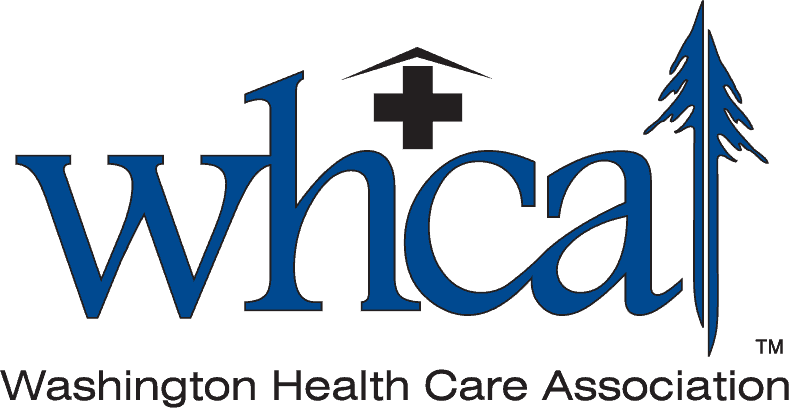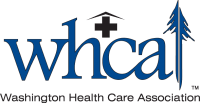Return to Work and COVID – FAQ
Is there anything specific to the COVID situation that we should keep in mind with RTW?
- With a valid, reasonably continuous job in place, workers who were furloughed due to COVID were paid unemployment rather than time-loss. This is beneficial to you as an employer because unemployment is less expensive than time-loss.
- With the above in mind, it’s unclear what will happen next. Unfortunately, we have already seen a second shutdown. If there are workers on time-loss who have not been offered valid, reasonably continuous work, we will want to explore getting that in place as soon as we can.
Are there any new RTW opportunities that COVID may provide?
- Employers have been very successful with sanitizing positions. Some companies are still able to get workers back to work with Door Greeting/Sanitizing positions—even if their lobbies are closed—to give delivery drivers access.
- Employers can utilize workers with restrictions to check temperatures.
- Employers can utilize workers with restrictions to update the COVID policies and make sure that mandates are being followed.
Are there any RTW challenges specific to COVID?
There are quite a few challenges with the biggest being that some employers are not open or are open with extremely limited capacity. This is going to be a tough time-period and what you want to do is prevent as much time-loss as possible so that these claims don’t affect the bottom line for longer than they should.
There will be some employees who don’t want to come back to work for fear of contracting the virus. If this is the case, the worker should not continue to get time-loss. When work is offered, the employee is free to make a choice to accept or decline. With either decision, the worker is then no longer eligible for time-loss payments.
WHCA Safety
Avoiding Muscle and Ligament Injuries in the Healthcare Industry
Over six million injuries occur in the workplace every year. Sprains, strains, and tears to muscles and connective tissues are some of the most common injuries employees experience in the healthcare industry. Download helpful tips to reduce sprains and strains.
Opening or Closing L&I Accounts
This year has brought many changes to the business landscape in our state. Companies are innovating, adapting or making the difficult choice to close in response to the economic pressures brought on by the pandemic. If you are adding locations, opening new businesses, or closing and/or selling your business, one of the steps you will need to take is setting up or settling your accounts with L&I.
Adding Locations or Opening a New Business
The first step is letting the state of Washington know by filing a Business License Application with the Department of Revenue. This allows the state to assign a Unified Business Identification (UBI) Number. Depending on what you designate on the application, it also signals to other agencies that accounts should be established. Here are a couple of common scenarios with the appropriate business license application process:
- You have a new location opening up with the same ownership as your existing locations. If you want the businesses to have the same UBI, complete the Business License Application and select the option to add a location to an existing UBI. If you will have employees (even if you are not hiring them now), indicate on the application that you will be hiring. This signals the Department of Revenue to inform L&I and Employment Security to set up workers compensation and unemployment accounts.
- You have a new business with different majority ownership than your current businesses. Complete the Business License Application without listing the existing UBI and indicate that you will be hiring employees. L&I will create a brand-new policy, separate from your existing accounts.
As L&I sets up your policy, you have the choice of combined or separate reporting for your locations.
- Combined reporting places all locations under the same exact account number, (for example 123,987-00). You pay premium for all locations under one account and all claims are assigned to this account number, regardless of the location.
- Separate reporting places all locations under the same 6-digit policy but each will have separate sub-accounts (123,987-00; 123,987-01, 123,987-02, etc.). Separate reporting requires that premium be paid each quarter under each sub-account and claims are assigned to the specific sub-account for each location. There are pros and cons to each approach, and we can help you decide which is best for your business.
Closing or Selling one Location or Your Entire Business
The Department of Revenue is also the place to go to start the process of notifying state agencies of your changes. Completing a Business Information Change Form signals to Department of Revenue to notify Business Licensing, Employment Security, L&I, and the Secretary of State’s office of the pending closure/sale. You should also notify your L&I account manager and ERNwest Group Manager. L&I will require you to complete and file your final Quarterly Report. Your ERNwest Group Manager will help ensure that your L&I accounts are closed and no claims or penalties for late premium are assigned to your business after the business has closed.
These are trying times and ERNwest is here to help your company navigate the workers’ compensation waters, from account set-up to safety programs to claims management and to account closure if necessary. Please let us know if there is anything we can do to help.
OSHA Recordkeeping
Your Responsibilities
Time to get up-close and personal with those OSHA logs. December is usually the month business owners clean up Worker Injury and Illness records, in preparation for the recordkeeping scramble in January. Remember that if you are a “covered employer,” you have two obligations:
- You are required to post your OSHA Form 300A Summary in an area available to employees and employee representatives, February 1 – April 30.
- You are required to provide your OSHA Form 300A Summary of Work-Related Injuries and Illnesses during 2020 in electronic format to Federal OSHA by March 2, 2020.
ERNwest offers webinars to help you complete your OSHA Recordkeeping responsibilities. OSHA Recordkeeping – Nuts & Bolts and OSHA 300 Recordkeeping Electronic Reporting are offered in both Decembers 2020 and January 2021 and will get you up to speed on all your recordkeeping requirements. Go to a list of ERNwest Training online to register for the webinars that work on your schedule. Download the OSHA Fact Sheet to understand full requirements under the rule.
Q&A
If I am not exempt from OSHA Recordkeeping, am I also not exempt from the OSHA Electronic Reporting requirement? How do I know if I am a ‘covered employer?’
If you know you are exempt from the recordkeeping rules because, for example, you’re an employer with ten or fewer employees during the entire year or your business NAICS identifier appears on the list of exempt businesses, you are also exempt from the OSHA Electronic Reporting Rule. The exception is that the State of Washington Labor and Industries (L&I) Division of Occupational Safety and Health (DOSH) or the Federal Occupational Safety and Health Administration (OSHA) and Bureau of Labor Statistics (BLS) may select you to participate in the Survey of Occupational Injuries and Illnesses for the reporting year and that you must keep accurate and complete records of each workplace-related injury and illness. Learn what a covered employer is.
What forms are required, and where can I get the correct ones? Do I have to use the Federal OSHA forms, or are there approved substitute forms available?
To ensure compliance with both the OSHA Recordkeeping and the Electronic Reporting rules, the OSHA Recordkeeping 300 series forms must be used and correctly completed. The exception to this is the OSHA Form 301, the Injury and Illness Incident Report. The State of Washington allows the use of a substitute form, approved by the State, in place of the OSHA Form 301. ERNwest provides an approved substitute form for its client base – please call your ERNwest Claims Manager or Group Manager. Download the fillable OSHA Forms 300 and 300A PDFs.
Helpful Winter Safety Information
Winter Walking
Winter weather is a well-known headache for commuters. But when people arrive at work, they must face yet another hazard—sidewalks and parking lots that may be icy or slick.
“In 2014, there were 42,480 workplace injuries and illnesses involving ice, sleet or snow that required at least one day away from work to recuperate,” according to data from the Bureau of Labor Statistics. These incidents were the result of falls, slips or trips; overexertion and bodily reaction; transportation incidents; or contact with objects and equipment. Get more information on winter weather slip, trip & fall prevention.
Winter Driving
Winter is here and with it comes skiing, sledding, and potentially dangerous driving conditions. Whether travelling mountain passes, the Palouse, or just the hills of Puget Sound, it’s a great time to remind ourselves of what we can do to be safe on the road. Here are a few tips to follow this winter:
- Make sure your car is prepared for winter.
- Do a pre-drive check of your vehicle before heading out.
- Check road conditions along your route.
- Review methods to avoid a crash in bad weather.
For more information on winter driving, you can go to the National Highway Traffic Safety Administration website.
Influenza – You Can Contain the Spread
During the flu season, influenza is a real concern in a health care facility. Caretakers work closely and come in direct contact with patients and other staff, which means germs and bacteria can spread quickly from person to person. In addition, there is a chance you will face exposure to the virus, either directly or indirectly. Download helpful tips on controlling the spread of Influenza.
Upcoming Training
Select the dates below for more information about ERNwest-specific trainings and to register.
December 1 | 10:00am | Understanding Industrial Insurance Rates
December 3 | 2:00pm | What is Retro*
December 15 | 10:00am | OSHA Recordkeeping – Nuts & Bolts
December 17 | 10:00am | OSHA 300 Recordkeeping Electronic Reporting
December 22 | 10:00am | Using Kept on Salary and Modified Duty Effectively
View a list of all ERNwest training
Latest COVID-19 Updates
Additional Retro Resources
WHCA Safety Resources
Access WHCA and general safety resources. Learn more.
WHCA Pays You Back!
The association, through the Retro program, will reimburse up to $2,500 per year when you buy equipment needed to keep your staff working safely. Access the Safety Rebate Form for a complete list of covered items and for instructions to get started. Download the 2020-2021 WHCA Safety Rebate Form.
Administrator / Executive Director Training
Whether you are new to the Washington Health Care Association (WHCA), new to Retro, new to your position or just have questions, you’ll find helpful information about the benefits and requirements of WHCA Retro membership and how ERNwest can help you succeed with Washington Workers’ Compensation. | Welcome to WHCA Retro
Report All Incidents
Remember to report all incidents on the ERNwest website so that your claims manager is aware and can help guide you through the process. | ERNwest.com/report-an-incident
Contacts
WHCA Retro Questions?
Stephanie Scheurich, WHCA Group Manager (253) 237-0837 | SScheurich@ernwest.com
WHCA Safety Questions?
ERNwest Safety Department Safety@ernwest.com
Darrell Beaman (Central/Eastern WA) (253) 237-0831 | DBeaman@ernwest.com


